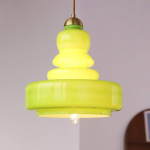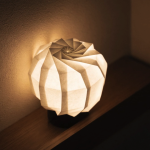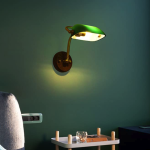Introduction
Lighting plays a significant role in the interior design of your villa. The use of light can change the mood, style and functionality of a room. The key is to strike a balance between form and function while keeping in mind the aesthetic appeal of the lighting fixtures. In this article, we will provide you with some tips on how to use lighting to enhance the beauty of your villa, while also making it more functional.
Types of Villa Lighting
Ambient Lighting
Ambient lighting, also known as general lighting, creates a soft glow that illuminates the entire room. It provides an overall sense of brightness, making the room feel more welcoming and warm.
Task Lighting
Task lighting is focused on specific areas where you require more illumination for specific tasks. It could be a table lamp, a floor lamp or even cabinetry lights. Task lighting is essential in reading areas, kitchen counters, and above bathroom vanities, helping to reduce eyestrain and fatigue.
Accent Lighting
Accent lighting highlights a specific item or feature in a room, such as artwork, sculptures, or architecture. It creates contrast and depth, drawing attention to specific areas or objects and adding a touch of drama to the room.
Tips on Villa Lighting Design
1. Layer Your Villa Lighting
Layering your lighting is an essential part of villa lighting design. It involves using a combination of lighting types, such as ambient, task, and accent, to create a harmonious balance of light. Ambient lighting creates a welcoming and comfortable atmosphere, task lighting helps you complete specific activities, and accent lighting draws attention to specific areas or objects in the room. By combining all three types of lighting, you can create a beautiful, functional, and well-lit villa.
2. Consider Natural Light
Natural light is an excellent source of illumination and can also enhance the ambiance of your villa. Consider the placement of windows and skylights to maximize natural light. When natural light is not available, consider adding artificial light sources that mimic natural light, such as white LED or fluorescent lights.
3. Choose the Right Fixtures
The right lighting fixtures can significantly enhance the appearance of your villa. Choose fixtures that complement your interior design style while also providing adequate illumination. When selecting fixtures, consider the style, size, and placement of the fixture, and ensure they provide sufficient light for the area.
4. Pay Attention to Bulbs
The choice of bulbs can also have a significant impact on the ambiance of your villa. Bright white lights are suitable for work areas, while warm light bulbs create a cozy atmosphere. Dimmable bulbs allow you to control the brightness and set the mood in the room.
5. Emphasize Height
Lighting fixtures that are installed higher up can create a sense of height in the room. Consider using recessed lighting or fixtures that hang from the ceiling to create the illusion of a higher ceiling. This is especially useful in small rooms and entryways.
6. Add Character with Style
Lighting fixtures can add a touch of character to your villa. Consider mixing and matching styles to add variety and interest to your lighting design. For example, a vintage chandelier can add a touch of elegance to a modern room. Alternatively, an industrial pendant light can add a touch of rustic charm to a farmhouse-style villa.
Conclusion
Villa lighting design is an essential aspect of interior design. By incorporating a combination of ambient, task, and accent lighting, choosing the right fixtures and bulbs, and emphasizing height and style, you can create a functional and aesthetically pleasing space. Remember, lighting is not just about illumination; it also plays a significant role in the ambiance and mood of the room.






